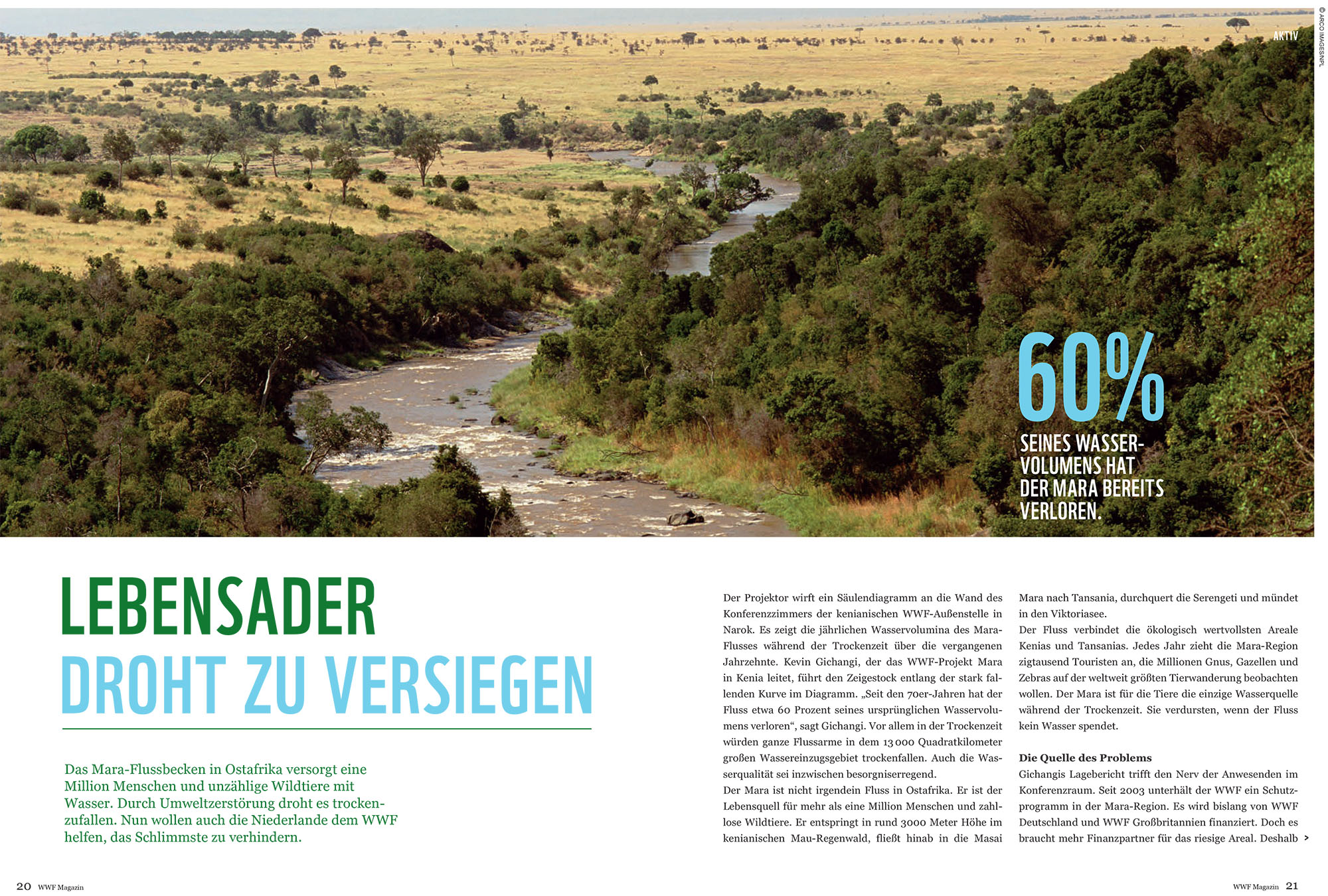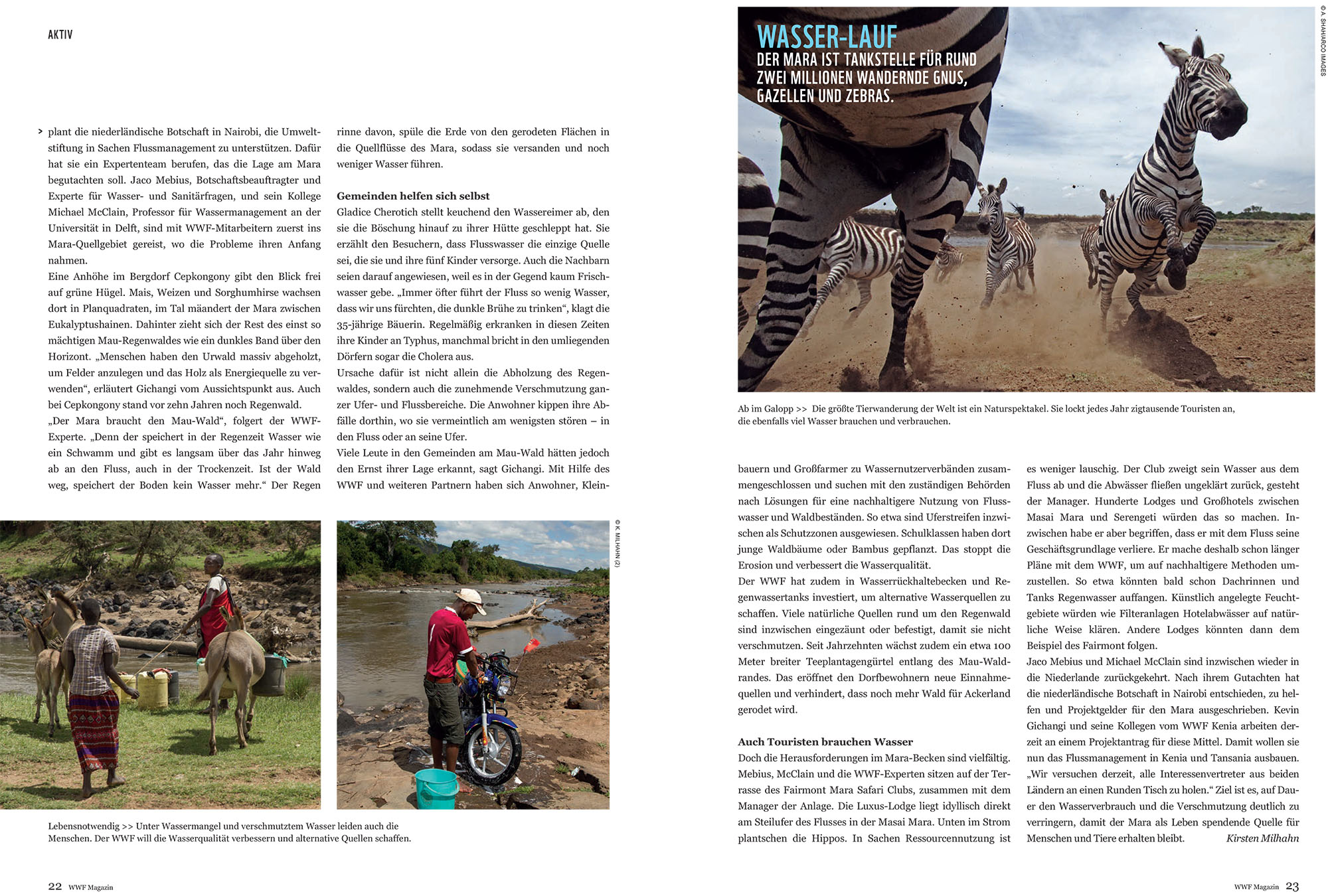The Mara River Basin in East Africa supplies water to one million people and countless wild animals
It is in danger of drying up due to environmental destruction. Now the Netherlands also aim to help the WWF prevent the worst from happening
The projector displays a chart on the wall of the conference room at the Kenyan WWF field office in Narok. It shows the annual water volumes of the Mara River during the dry season over the past decades. Kevin Gichangi, who is in charge of the WWF Mara project in Kenya, moves the pointer along the sharply falling curve in the diagram. ‘Since the 1970s, the river has lost around 60 per cent of its original water volume,’ says Gichangi. Particularly in the dry season, entire arms of the river in the 13,000 square kilometre catchment area fall dry. The water quality is also worrying.'
The Mara is not just any river in East Africa. It is the source of life for more than a million people and numerous wild animals. It rises at an altitude of around 3000 metres in the Kenyan Mau rainforest, flows down into the Masai Mara to Tanzania, crosses the Serengeti and joins Lake Victoria. The river connects the ecologically most valuable areas of Kenya and Tanzania. Every year, the Mara region attracts tens of thousands of tourists who want to observe millions of wildebeest, gazelles and zebras on the world's largest animal migration. The Mara is the only source of water for the animals during the dry season. If the river does not provide water they die of thirst.


